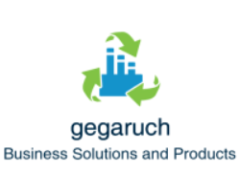Auditing your sales funnel is a vital task you should do from time to time, especially if you have lagging conversions or trickling in leads. While you can easily be overwhelmed by the moving parts in a funnel, there are several metrics you need to look out for if you’re trying to get it to perform better.
You don’t need to be buried in spreadsheets to get clarity. What you do need is to focus on the right data-driven metrics—numbers that tell a story. So, the next time you conduct a sales funnel audit, keep a close eye on these metrics to gain insight and direction.
1. Lead-to-Customer Conversion Rate
Not all leads are created equal. If you’re only focusing on the number of leads entering your funnel—without tracking how many of them convert into paying customers—you’re not seeing the full picture.
This metric tells you how well your funnel is turning interested folks into buyers. If you’re bringing in 1,000 leads but only closing 10 deals, you’re looking at a 1% lead-to-customer conversion rate.
The beauty of this metric is that it doesn’t just expose underperformance—it guides you to the leak. Once you know your conversion rate, you can backtrack. Are sales conversations happening? Are follow-up emails being opened? Are salespeople overwhelmed or underperforming? When you drill into the specifics, you get a clearer path to optimization.
2. Time to Conversion
Time. It’s one of those sneaky metrics that often gets overlooked, but it’s crucial. How long does it take for a lead to become a customer in your funnel? A week? A month? Longer?
The time to conversion metric will give you a sense of your funnel’s pace. If your sales cycle is dragging, there’s a strong chance you’re either overwhelming your leads with too much info or not engaging them enough along the way. Maybe you’re sending a follow-up email four days after they downloaded your lead magnet—and by then, they’ve already forgotten you exist.
When you look at the time it takes for leads to convert, you can identify points where they’re stalling. Are they pausing at the pricing page? Are they not scheduling demos fast enough? Sometimes, just re-sequencing your content or tightening the time between touchpoints can make a dramatic difference. The quicker you can move someone from “interested” to “invested,” the healthier your funnel becomes.
3. Drop-Off Rate Between Funnel Stages
Have you ever felt like you’re losing people in the middle of the conversation? Like someone said “Yeah, I’m interested,” and then poof—they’re gone?
That’s what this metric is all about. It tells you how many people are abandoning the process at each step of your funnel. They could have signed up for your free webinar but never showed up. Or they watched the demo but didn’t book a follow-up call. Whatever the stage, there’s a reason they’re bailing. If you don’t track this, you’ll never know where the friction is.
Once you’ve identified those sharp drop-offs, you can plug the gaps. That might mean rewriting a landing page, adding trust signals like testimonials, or simply reducing the number of steps in your funnel. Less friction = more conversions. It’s that simple.
Summing Up
Auditing your sales funnel doesn’t have to be this dry, spreadsheet-heavy nightmare. It’s really about listening to the numbers that matter.

 Phenomenon Studio: Award-Winning Product Design & Innovation
Phenomenon Studio: Award-Winning Product Design & Innovation  3 Data-Driven Metrics to Watch During Your Next Sales Funnel Audit
3 Data-Driven Metrics to Watch During Your Next Sales Funnel Audit  How to Backup Your Dedicated Server Effectively
How to Backup Your Dedicated Server Effectively  Why Your Choice of Hydraulic Pump Motor Could Make or Break Your Industrial Operation
Why Your Choice of Hydraulic Pump Motor Could Make or Break Your Industrial Operation  Small Size in Microchannel Heat Exchanger Systems
Small Size in Microchannel Heat Exchanger Systems  Top Web Hosting Trends and How It Can Affect Your Business
Top Web Hosting Trends and How It Can Affect Your Business  Do Website Builders Affect Website Performance?
Do Website Builders Affect Website Performance? 
